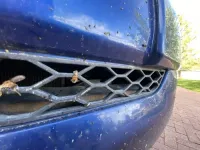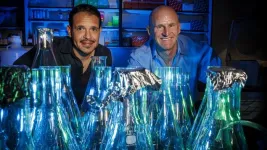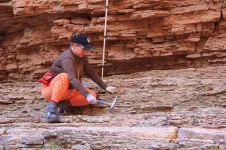Mature egg cells, or oocytes, are essential for fertilization in assisted reproductive technologies. However, some ‘denuded’ oocytes, or those lacking the protective granulosa cell layer, fail to mature. Now, in a new study by researchers at Shinshu University, the team has developed a method to culture mature oocytes from these denuded oocytes in the lab. This innovative approach holds promise for overcoming significant challenges in reproductive science, marking a major advancement in fertility research.
Assisted reproductive technology (ART) is a fertility treatment where eggs are removed from the ovaries, combined with sperm outside the human body, and the resulting embryos are placed in the uterus. Typically, eggs or oocytes grow within fluid-filled sacs called follicles in the ovary. Granulosa cells (GCs) surround the developing egg and provide essential nutrients and hormones. However, early-stage follicles have only a thin GC layer, and during isolation for fertility treatments, these cells may detach from the egg, leaving behind “denuded” oocytes, which are unable to mature and cannot be used in ART.
Now, in a study published online on 21 August 2024 in Biology of Reproduction, Assistant Professor Kanako Morohaku and her team at Shinshu University have identified a novel method to produce viable, embryo-forming eggs from denuded oocytes taken from “preantral” follicles in mice. Preantral follicles represent an earlier developmental stage, unlike the more mature antral follicles typically used in ART. While previous research focused on antral follicles, there have been limited attempts to obtain viable eggs from preantral follicles.
To address this issue, the researchers isolated denuded oocytes and GCs from mice, which were then grown together in a U-shaped lab dish for eight days. This led to the formation of granulosa cell-oocyte complexes, or GOCs, which allowed the oocytes to interact with supporting cells again. In a previous study, the team found that oocyte quality was affected by the oxygen concentration under which GOCs were cultured. Hence, these oocytes were cultured with GCs under high (20%) and low (5%) concentrations of oxygen to observe the difference in oocyte growth.
They observed that low oxygen levels significantly improved the development of GOCs and stimulated the formation of transzonal projections, thin cellular connections necessary for oocyte growth. After eight days, these reassembled GOCs were cultured on a collagen-coated membrane for four additional days, leading to the maturation of oocytes into fertilizable eggs.
To test their viability, the researchers fertilized the eggs and transferred 126 embryos into female mice, following which they obtained six live pups. “To the best of our knowledge, our new culture protocol is the first to successfully obtain offspring from preantral follicle-derived denuded oocytes grown by reconstructing GOCs in vitro,” explains Mr. Tomohiro Kohama, a PhD student and one of the authors, highlighting the landmark nature of the study.
Needless to say, study’s implications extend beyond human fertility treatment. The researchers suggest that this new method could also benefit large animals like cattle and pigs, where typical egg maturation techniques often fail due to the unique structure of their ovaries. Additionally, the approach could help converse endangered species by supporting ex vivo (outside an organism’s body) production, offering a new way to preserve genetic resources.
The researchers are confident that these results will prove to be invaluable for the field of ART. Elaborating further, Prof. Morohaku says, “Ex vivo egg production is required for livestock and endangered animals for efficient use of genetic resources, breeding, creating animal models to understand how germ cells develop, and for humans as a treatment for infertility.”
This novel method could prove to be invaluable for animals like cattle and pigs, whose ovarian structures make traditional culturing methods less effective. The research team is optimistic that their findings will advance reproductive biology and fertility treatments. By enhancing the viability of denuded oocytes, this innovative approach could offer renewed hope for individuals facing infertility and contribute to the conservation of endangered species.
Even as the team explores the potential applications of their work, they aim to significantly impact both human reproductive health and the preservation of genetic diversity in the animal kingdom.
###
About Shinshu University
Shinshu University is a national university founded in 1949 and located nestling under the Japanese Alps in Nagano known for its stunning natural landscapes. Our motto, "Powered by Nature - strengthening our network with society and applying nature to create innovative solutions for a better tomorrow" reflects the mission of fostering promising creative professionals and deepening the collaborative relationship with local communities, which leads to our contribution to regional development by innovation in various fields. We’re working on providing solutions for building a sustainable society through interdisciplinary research fields: material science (carbon, fiber and composites), biomedical science (for intractable diseases and preventive medicine) and mountain science, and aiming to boost research and innovation capability through collaborative projects with distinguished researchers from the world. For more information visit https://www.shinshu-u.ac.jp/english/ or follow us on X (Twitter) @ShinshuUni for our latest news.
About Assistant Professor Kanako Morohaku from Shinshu University
Dr. Kanako Morohaku is an Assistant Professor in the Faculty of Agriculture, Department of Agricultural and Life Sciences, Division of Animal Science at Shinshu University. Her research interests lie in animal science, especially animal reproduction. She has published more than 20 papers with over 800 citations on the topics of germ cell physiology and engineering, animal reproduction, oocytes and ovaries, in vitro culture, and germ cell preservation.
END




